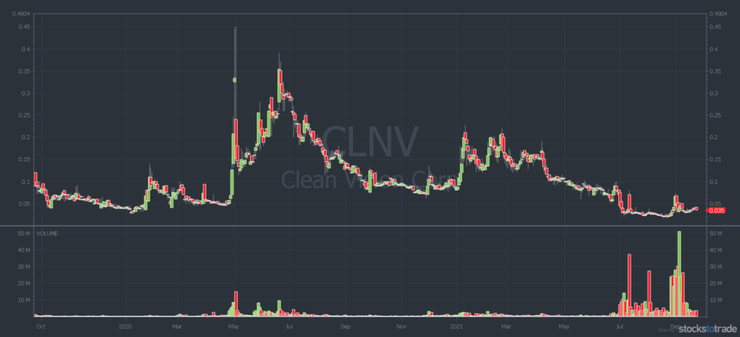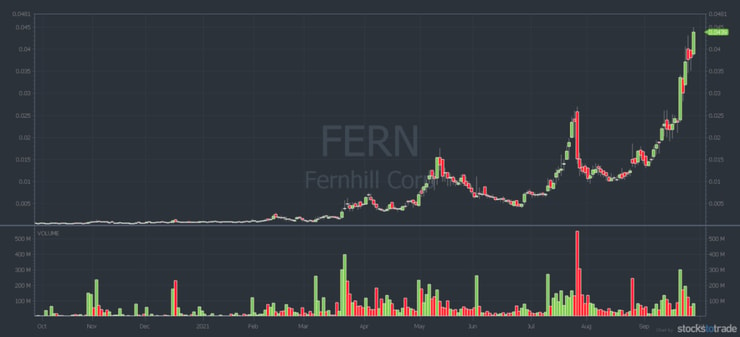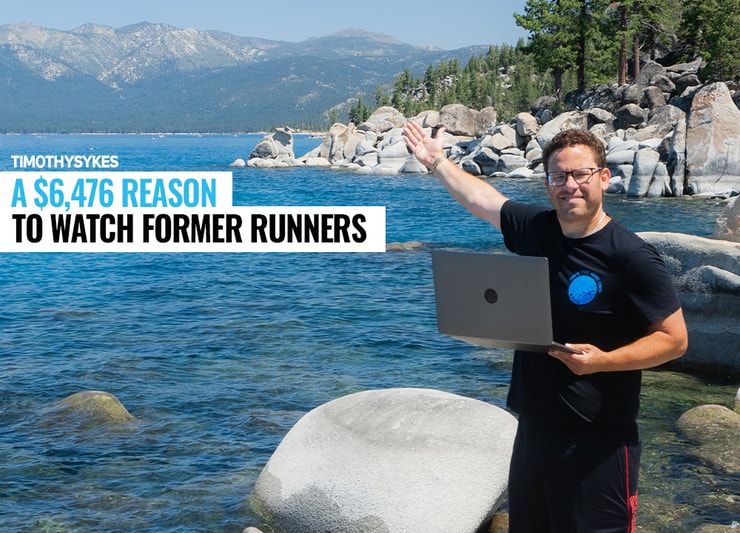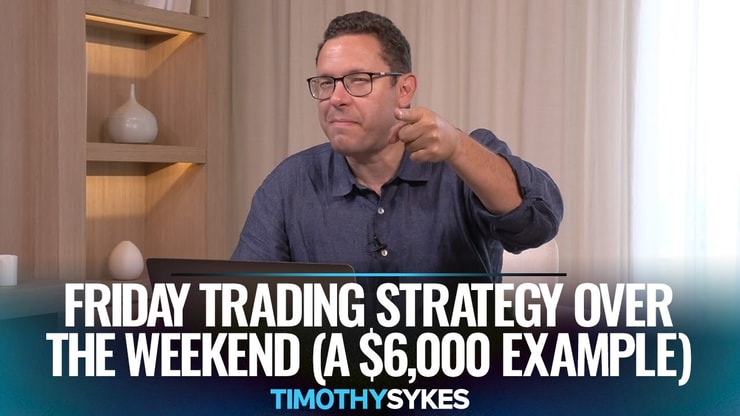Former Runners: Key Takeaways
- Why former runners have the potential to run again…
- How I traded a recent former runner and profited over $6,400!*
- Why studying the past is a MUST — especially for new traders…
Get the “proprietary” detector for spotting HUGE spikes in penny stocks
Former runners that have gone supernova in the past can do it again. That’s why I always tell students to STUDY THE PAST! A stock’s history can tell you whether it has the potential to spike. Learn from these two examples and one of my trades here.
Table of Contents
What’s a Former Runner?

A former runner is exactly what it sounds like — a stock that’s run before. It could have been last year, last month, or last week.
These stocks have the potential to go supernova again, so you have to dig in to understand why the stock spiked. What was the catalyst? How much volume did it trade? How big was the spike, and how long did it last?
Remember, history doesn’t repeat, but it often rhymes…
Why Studying the Past Is Imperative for Future Success
Before you take any trade — ALWAYS look at a stock’s history.
Stocks have personalities. It’s like how athletes have muscle memory. Stocks have a memory too. That’s because traders often remember former big runners. They know what’s possible with a stock. And with enough momentum, it can become a self-fulfilling prophecy.
The past can also show you which indicators and catalysts can move stocks. And when sector momentum comes into play.
Let’s dig into some recent examples so you can see what I mean…
More Breaking News
- Top Bitcoin Stocks to Watch Under “Crypto Emperor Trump”
- BigBear.ai’s Journey in the Stock Market: Rising Trends and Challenges
A $6,476 Reason to Watch Former Runners
My recent Clean Vision Corporation (OTCPK: CLNV) trade is a great example of how I trade a former runner spiking on news.
First, look at the two-year chart…

You can see the stock had a huge multi-day run in April 2020. It went from 5–45 cents in a few days.
Then in January 2021, the stock spiked again. And before my recent trade, it ran from about 2–7 cents in four days. It was back to trading around 3 cents when the company released news on a Friday afternoon…
That’s when I recognized a pattern I’ve traded since college. And I made $6,476 on my trade.*
I break down my entire trade and weekend profit strategy in this video…
Notice that I didn’t swing for a home run. And I didn’t hold and hope the stock would go back to its former highs. I had a specific trading plan and I followed my trading rules.
Want to get an alert the next time I see a trade with weekend-profit potential? Learn more about Weekend Profits and sign up here.
Here’s another example of a former runner going full supernova…
Fernhill Corporation (OTCPK: FERN)
FERN had a small spike in May. Then it had a big multi-day run in July after the company announced it will acquire a crypto mining platform.
Crypto was a hot sector at the time. Bitcoin (BTC) bounced from $30,000 to $40,000 that month.
Then in September, FERN spiked again. The company appointed a new executive vice president and provided an acquisition update on September 9. Then on September 29, it launched a website for its crypto mining platform. The stock hit new multi-year highs.
Check out FERN’s one-year chart. It’s beautiful…

FERN was one of my Supernova Alerts in September.* It was also on my daily watchlist sent to Profit.ly subscribers. Choose the right Profit.ly subscription for your dedication level here.
I LOVE GETTING TWEETS LIKE THIS FROM MY STUDENTS, $FERN HAS BEEN SOLIDDDDDDDDDDD! Check out https://t.co/qgHC3ar7XF to learn more, these multi-way/multi-week breakouts have been on fire lately, like $TGGI $ILUS $ISWH $CYBL $SFOR too, all of which I underestimated big time https://t.co/UT2OA5wucO
— Timothy Sykes (@timothysykes) September 23, 2021
How to Find Former Runners
Finding former runners isn’t luck — it’s a skill. And it’s a repetitive strategy.
So what’s the best way to find former runners? Studying the past.
Use a platform like StocksToTrade to keep watchlists of former runners and see the catalysts that make them run.** The more you study, the easier it can be to recognize patterns.
Former runners are what my students and I look for every day. And I want to help you learn to spot them for yourself. That’s how you can become a self-sufficient trader.
Want to ramp up your trading knowledge? Find the right mentor for you.
Trading Challenge

I teach students everything I’ve learned from my 20+ years of experience in my Trading Challenge.
I’m basically a glorified history teacher. That’s why I know to watch former runners. But this is just one part of the big picture of trading…
You need rules, discipline, strategies, patterns, and so much more.
It’s how I’ve made over $7.2 million in trading profits and lasted for 20+ years in the market.* You have the opportunity to learn from me and my top students — apply for my Trading Challenge today.
How do you watch and trade former runners? Let me know in the comments!
Disclaimers
*Results are not typical and will vary from person to person. Making money trading stocks takes time, dedication, and hard work. Most who receive free or paid content will make little or no money because they will not apply the skills being taught. Any results displayed are exceptional. We do not guarantee any outcome regarding your earnings or income as the factors that impact such results are numerous and uncontrollable.
**Tim Sykes has a minority ownership stake in StockstoTrade.com.





Leave a reply